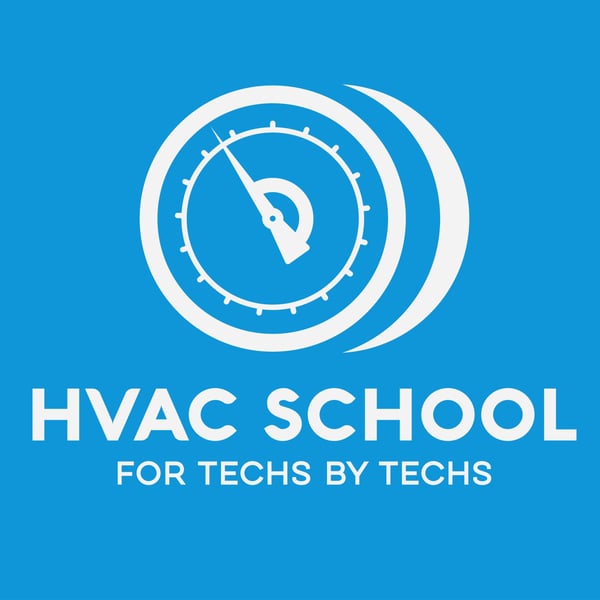Short #7 - A Moisture Problem
HVAC School - For Techs, By Techs
Bryan Orr
4.8 • 985 Ratings
🗓️ 27 April 2018
⏱️ 10 minutes
🧾️ Download transcript
Summary
In this short episode, we replace a dirty "M" word (mold) with another "M" word (moisture) that gets to the root of the problem.
"Mold" and "mildew" can freak out your customers. For years, I've refrained from saying "mold" at my own company and trained my techs to avoid it AND "mildew." Instead, we have called it "biological growth" or "organic growth." Those still aren't great. Just recently, my friend Joe Medosh suggested referring to fungal growth as a "moisture problem" instead.
"Moisture problem" is a fact-based and less disgusting term. We can focus on solutions with indoor air quality (IAQ) to address the overarching issue that causes the growth, not just the nasty growth.
In some cases, parts of the home may hit the dew point in colder temperatures. So, drywall is particularly vulnerable to falling to dew point if the building envelope has been poorly sealed. So, we have a practical means of reducing relative humidity below 55%. We can also seal the envelope better and address potential issues related to infiltration.
A duct with poor or compressed insulation may also be prone to "moisture problems." We can address those "moisture problems" by properly strapping the duct. In cases when air handlers sweat by an improperly sealed duct, we seal the duct correctly to nip the problem in the bud. In the case of sweating vents, we must analyze the supply air, check the blower fan speed, and look for restrictions. Make sure all components are clean and that you seal up any leaky areas.
Remember, "moisture problems" do NOT occur because hot meets cold! The moisture content and dew point are the key factors, not just a temperature differential.
Transcript
Click on a timestamp to play from that location
| 0:00.0 | Looks like you've stumbled on the HVAC school podcast, the podcast that helps you remember some things |
| 0:08.8 | that you might have forgotten about the HVECR industry or helps you remember some things you forgot |
| 0:12.4 | to know in the first place. |
| 0:13.8 | I'm Brian and today's episode is called a moisture problem. |
| 0:18.6 | A moisture problem. |
| 0:21.0 | But before we get into that, I want to thank our sponsors and partners, I should say. That is Mitsubishi Comfort and Carrier. They've been with me in business since the very beginning when I started Kailos in 2005 and they've been great partners with us. |
| 0:35.4 | They are the equipment that we sell at my company so that makes them an easy |
| 0:39.4 | low-hanging fruit for me to talk about here on the podcast. And I'm very thankful to them for making |
| 0:43.7 | this podcast a possibility. I also want to thank Air Oasis. Air Oasis makes an excellent |
| 0:49.2 | quality bipolar ionizer. They make a great AHCO system that sends out hydrogen peroxide |
| 0:56.4 | ions into the air. Probably familiar with it, there's a lot of different |
| 0:59.4 | technologies like that, but what I like about Aerolasis is that they're American made, they're really quality people, they make a really good product. |
| 1:07.0 | We haven't had any issues with their products. They're very forthright with their training. |
| 1:11.0 | They help you understand how it works. If you want to find |
| 1:13.1 | out more you can go to air oasis.com and I also want to thank Wrightsoft for what |
| 1:18.1 | they do to make excellent design products for manual D, manual J. they also have one now for Florida |
| 1:24.3 | Florida energy code which I use a lot and I want to thank those guys for for making great software and supporting us here on the |
| 1:30.0 | podcast as well but today's podcast is called a moisture problem and I have to |
| 1:35.1 | give full credit on this to my friend Joe Medash. Joe Medash was formerly lead |
| 1:41.0 | trainer or I don't know if he's a lead trainer he was a trainer for retro attack and went all around the country and that's how I met Joe |
| 1:46.7 | Also retro attack also a good company and they make blower doors and duck leak test kits and everything but Joe was down doing a little training with us not long ago and we're talking talking with Joe and we the subject of mold came up we were specifically talking about healthy homes and of course even just saying the mold word, I feel like I shouldn't be saying it because, you know, it's something we don't say in the field. |
| 2:08.0 | We don't say the M word. In fact, I tell my guys don't say mold or mildew. For years I've said biological growth or |
... |
Please login to see the full transcript.
Disclaimer: The podcast and artwork embedded on this page are from Bryan Orr, and are the property of its owner and not affiliated with or endorsed by Tapesearch.
Generated transcripts are the property of Bryan Orr and are distributed freely under the Fair Use doctrine. Transcripts generated by Tapesearch are not guaranteed to be accurate.
Copyright © Tapesearch 2025.

